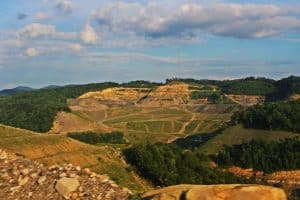Buzzwords, talking points, and catchphrases have invaded the mineral exploration space, especially pertaining to batteries and clean energy. The lists are long and include a lot of overlap. Battery metals overlap with wind and solar, which overlaps with critical minerals, just to name a few.
What do these buzzwords and catchphrases actually mean in an exploration and mining context? A shallow dive into this topic will look at minerals, with a focus on their benefits and how they relate to exploration, as well as the environmental and cultural issues created.
Metals for batteries and energy, as well as critical minerals, must all be mined. Buzzwords about these topics are common in the news, such as lithium, chromium, nickel, iron, aluminum, graphite and copper. These are not just words; they are actual things. The metals are used in lithium-ion batteries, wind turbines, solar panels, and other metals that are not as well-known used in military, communications, and infrastructure. Most people don’t realize how much their everyday lives depend on many different metals and critical minerals that must be extracted, milled and processed, just to become a useable commodity.

Battery and clean energy metals, while somewhat common, need to be found in quantities that are large enough to be extracted at a profit. Additionally, these deposits are developed where they’re found; they can’t be moved if they are located someplace that is inconvenient for one group or another. They are where they are, although some minerals can be reclaimed from waste material discarded from pervious mining these are fewer in number and the volumes will not meet demand in most cases.
Society must at this point decide if it wants an area left undisturbed, or if it wants clean energy.
It can’t have both. That does not mean mining gets a free hand. Most mining companies are good stewards of the land they mine. They reclaim the land as best they can during and after mining. Mining companies strive to mitigate and control any pollutants that may be generated by mining processes. Governments permit and oversite operations to make sure the damage — there will usually be some injury done to the land — is the least amount possible. This is addressed as “undue degradation” in National Environmental Policy Act (NEPA) documents and the environmental studies that support these reports.

Reclamation of minerals from mine tailings and waste dumps has also become a popular talking point, which has its own issues both good and bad. Reprocessed tailings or old dumps can liberate other minerals such as arsenic, chromium, mercury, lead and thorium. Some of these are critical minerals (like arsenic and chromium) or that can be used in nuclear energy production (such as thorium); others (like mercury and lead) are known to be toxic and have much less market value. These byproducts will have to be addressed by industry and governments. Most have some economic value, but tax subsidies or other economic relief will be necessary to help companies deal with such problematic minerals.

Another catchphrase commonly used is “carbon neutral”. It’s often pointed out that mining new minerals produces a lot of carbon emissions. All these metals do require large amounts of energy to extract them from the earth at the present time. There will have to be a trade-off in the short term of more carbon emissions now for much fewer in the future. When electric vehicle technology and electricity production catch up in the mining space, the extraction of metals and critical minerals will become carbon neutral. Metal production will contribute to greater carbon reductions in other aspects of life as these minerals make their way into the clean energy infrastructure and battery stream.
In the mining sector, buzzwords represent essential minerals and byproducts with various consequences. Some minerals support a sustainable future, while others pose challenges requiring industry and government intervention address and mitigate these issues. As mining companies, it is crucial to practice responsible land stewardship to minimize environmental impacts, preserve ecosystems, and ensure long-term resource availability for a sustainable clean energy future.
